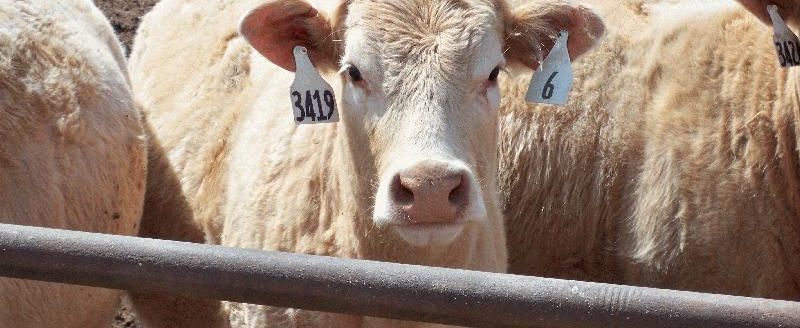K-State beef cattle experts say understanding rations, controlling expenses can be challenging
Locally sourced food has grown in popularity in recent years, leading some cow-calf producers to raise steer calves through the finishing phase rather than selling them at weaning.
Experts at the Kansas State University Beef Cattle Institute said it is important that first-time cattle feeders deliver the appropriate ration and understand the increased expenses they may incur.
“To hand-raise a steer from 700 pounds to 1,400 pounds, factoring in the purchase price of the animal, feed costs and processing expenses, the beef that you bring home is going to cost about $5 per pound,” said Bob Weaber, beef extension specialist, on a recent Cattle Chat podcast. “It will never be as reasonably priced as what you can buy at the grocery store.”
However, for those who want the experience of hand-raising a steer as compared to selling it to a cattle feeder, the experts offer the following advice.
“You may want to find a bulk storage solution for feed because that will decrease your feed costs from buying it a bag at time,” said Brad White, veterinarian and BCI director. One option, he said, is a gravity wagon that allows producers to buy feed by the ton and carry it by the bucket to the steers that are being fed.
Another way to reduce feed expenses is to purchase feedstuffs that are available in the local area, said BCI nutritionist Phillip Lancaster.
“A finishing feed will need to have quite a bit of grain in it. For many that local source will be corn but it will also need a high energy protein source like soybean meal, cottonseed meal or distiller’s grains,” he said. “Work with your local co-op or extension agent who can help you formulate the right ration for a growing steer.”
The main goal for steers hand fed between 700 pounds through the finishing phase is three pounds per day, Weaber said. “To make that goal, the calf needs to be fed six pounds of feed for one pound of gain so about 2.1 tons of feed during that phase,” Weaber said.
Along with the feed, he said the cattle need to eat hay to keep their rumen healthy. “The hay keeps the calves from going into an acidotic state with the high concentrate finishing feed,” Weaber said.
Veterinarian Bob Larson explained how a severe case of acidosis can be toxic to cattle and offered suggestions on ways to keep that from happening.
“You need to acclimate the cattle to a changing diet over several weeks where you are increasing the high grain concentrate and decreasing the hay. Otherwise some cattle will overeat the grain and that can have very serious consequences,” he said.
The timing of the feed delivery is also important
“Feeding them at the same time each day helps the rumen PH balance,” said Weaber, who recommends feeding twice a day, 12 hours apart. If a morning feeding is missed, he said it is better to skip that feeding rather than feeding twice in a shorter time period.
Along with the points mentioned above, the experts offered this checklist of recommendations when feeding a steer through the finishing phase at home:
- Create complete rations including mineral supplementation.
- Work with a veterinarian to develop a good health plan.
- Have adequate housing to raise the animal through the winter.
- Consider the economics when finishing the calves at home.
- Formulate rations based on the available feedstuffs.
- Determine bulk feeding storage options that may be available.
- Monitor changes in growth and adjust the amount of feed appropriate for that animal.
To hear the full discussion on hand-raising a steer, listen to the BCI Cattle Chat podcast.

